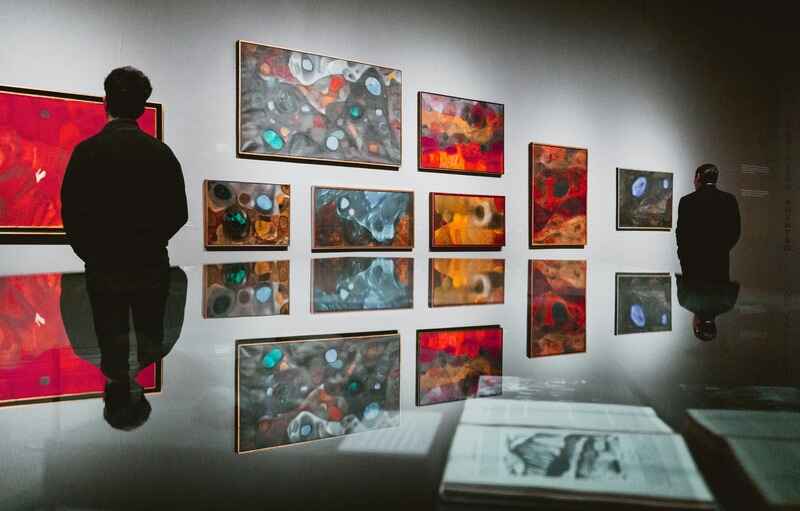Art is more than just visual appeal; it’s a complex world of creativity, culture, history, and investment potential. Understanding the value of artworks requires a careful analysis that goes beyond surface-level appreciation. Art analysis is an essential skill for collectors, investors, and art enthusiasts, offering insights into an artwork’s significance, quality, and market worth. This article will explore the fundamentals of art analysis, including factors that determine value, and how understanding these can lead to better acquisition decisions.
Art Analysis: Examining Aesthetic Qualities
The aesthetic qualities of an artwork are often the first elements people notice. When analyzing art, it’s important to consider how these elements contribute to the overall experience. This includes examining color, composition, texture, and form. Each of these components can significantly impact the perception of the artwork, influencing its emotional appeal and visual impact.
Color choices, for example, can convey different moods and themes. Bright, vibrant colors may evoke feelings of joy and energy, while darker shades might suggest mystery or melancholy. Composition, on the other hand, involves the arrangement of elements within the artwork. Effective use of space, balance, and focal points can guide the viewer’s eye and create a sense of harmony or tension.
Historical Context and Its Role in Art Analysis
A critical part of art analysis is understanding the historical context in which an artwork was created. The era, cultural environment, and events that surrounded the artist at the time of creation can provide significant insights into the meaning and value of the piece. Historical context can explain why certain themes, symbols, or styles were chosen, and how the artwork fits into a broader artistic movement.
For instance, the works of Impressionist painters like Claude Monet were heavily influenced by the social and technological changes of the late 19th century. Recognizing this context helps to understand the radical break from traditional painting techniques that these artists represented. Thus, historical analysis is crucial for anyone aiming to appreciate or invest in art, as it adds depth to the interpretation and increases the work’s perceived value.
The Significance of Provenance in Understanding Artwork Value
Provenance refers to the documented history of an artwork’s ownership. It is a critical factor in art analysis because it can greatly influence the value of a piece. Knowing where a piece has been, who owned it, and whether it has been exhibited or published can add to its prestige and desirability. Provenance can also verify the authenticity of an artwork, ensuring it is not a counterfeit.
Artworks with a well-documented provenance tend to fetch higher prices at auctions because they come with a level of assurance for buyers. Additionally, pieces that have been part of renowned collections or displayed in major exhibitions may carry extra value due to their historical and cultural significance. For collectors and investors, understanding an artwork’s provenance is an essential part of assessing its true worth.
Art Analysis: Assessing Authenticity and Condition
Determining the authenticity of an artwork is a crucial aspect of art analysis. Authenticity ensures that a piece is genuine and created by the artist it is attributed to. Counterfeit art is a major issue in the art market, making it essential for collectors and investors to verify the legitimacy of their acquisitions. Expert evaluations, scientific tests, and thorough examination of provenance are often employed to confirm authenticity.
The condition of the artwork is another significant factor that affects its value. Even authentic pieces can lose value if they are damaged, discolored, or improperly restored. Art analysis should include a careful examination of the work’s current state, checking for any signs of wear, fading, or other issues that might detract from its aesthetic and financial value. Works that have been well-preserved over time, especially older pieces, are often more desirable and can command higher prices.
The Role of Artist Reputation in Art Analysis
An artist’s reputation is one of the most influential factors in determining the value of their work. In art analysis, this involves studying the artist’s career, achievements, and the recognition they have received within the art community. Artists who have gained international acclaim or have had their works exhibited in prestigious galleries often see their pieces valued more highly.
Emerging artists, on the other hand, may present opportunities for early investment. If an artist’s work shows signs of popularity or critical acclaim, their pieces can increase in value over time. For art collectors and investors, analyzing an artist’s trajectory can be a key aspect of predicting future value and making strategic purchases.
Market Trends and Their Impact on Art Analysis
The art market is subject to trends, much like any other market. Understanding current market trends can help investors make informed decisions when buying art. Art analysis often includes monitoring auction results, sales records, and the general demand for specific artists, styles, or movements.
For example, a resurgence in interest for a particular style, such as Abstract Expressionism or Street Art, can lead to increased demand and higher prices for works in those categories. Similarly, the rising popularity of contemporary artists who address social issues might make their pieces more sought after by certain collectors. Keeping an eye on these trends enables investors to capitalize on shifts in the market, potentially buying artworks before their value surges.
Understanding the Role of Medium and Technique
The medium and technique used by an artist can also play a significant role in determining an artwork’s value. Whether the piece is an oil painting, watercolor, sculpture, or digital art, each medium has its characteristics and challenges, which can affect both the aesthetic appeal and the durability of the work. Techniques that demonstrate high skill levels, such as intricate brushwork, complex layering, or innovative uses of materials, can add to the perceived value of an artwork.
Additionally, some mediums are considered more prestigious or traditional, such as oil painting, which has been the preferred medium for many celebrated artists throughout history. However, contemporary art has seen an expansion in the use of diverse media, including installations, video art, and mixed media, each bringing its unique set of criteria for analysis. For investors, understanding the medium and technique can provide deeper insights into the artistic value and future worth of a piece.
The Emotional and Symbolic Value of Artworks
While much of art analysis involves technical and factual aspects, the emotional and symbolic value of a piece is just as important. Art has the power to evoke emotions, convey messages, and inspire thoughts, which adds to its overall worth. For many collectors, the connection they feel to a piece can be a significant part of its value.
Symbolism, motifs, and the story behind an artwork can also enhance its appeal. Some pieces gain value because they represent important cultural moments, ideas, or movements. Analyzing these aspects can provide a more comprehensive understanding of what makes an artwork valuable and why it resonates with viewers. This emotional and symbolic dimension is often what elevates art beyond its material and financial aspects, making it a unique and enduring form of investment.
Conclusion: The Art of Mastering Art Analysis
Art analysis is a multifaceted process that requires an understanding of both tangible and intangible factors. From aesthetic qualities and historical context to authenticity, condition, and market trends, each element contributes to the overall value of an artwork. For collectors and investors, mastering the art of analysis is key to making informed and strategic decisions in the art market.
By appreciating the nuances of art and understanding what drives its value, one can not only become a more knowledgeable art enthusiast but also a savvy investor. The art world is dynamic and ever-evolving, and those who can navigate its complexities are more likely to build valuable collections that stand the test of time.
Whether you are a seasoned collector or new to the art scene, approaching art analysis with a comprehensive perspective will enable you to appreciate the beauty, significance, and financial potential of each piece.


